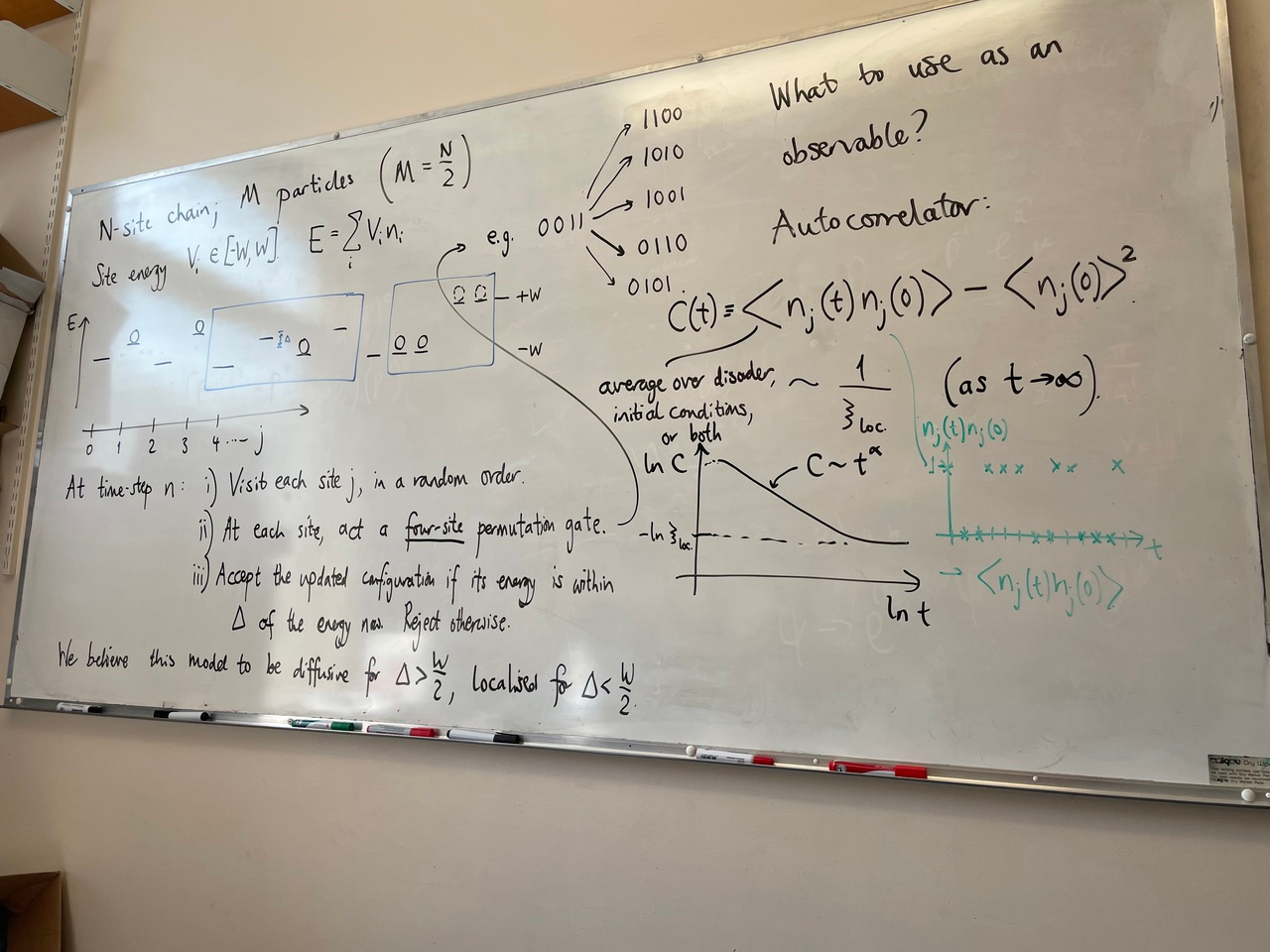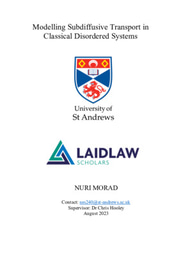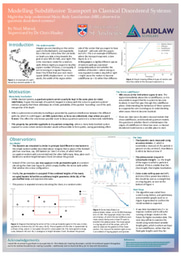Arts people might not like to hear it, but yes, maths is creative too.

Related Content

Research Poster: Modelling Subdiffusive Transport in Classical Disordered Systems
When it comes to research, unlike in teaching, physicists are broadly split into two camps: experimentalists and theoreticians. Reflecting on my project - my first experience doing research - I chose to bring up this distinction because it is one I have noticed rather clearly. Whilst experimentation always has a clear and tangible link to its real-world motivation, theory is - until it is understood well enough to arouse the interest of the experimentalists - by nature further removed. Mainly mathematical in the case of physics, this work is powerful, satisfying and necessary - but can often feel purely academic. Maintaining some connection to the overarching goal has been one of the more intriguing aspects of the past 6 weeks.
My project attempts to make a start in quantitatively understanding how information moves along a certain chain of atoms, known as a spin chain (more or less). At least, that is the end goal. The work itself involved developing from scratch an algorithm that simulates the dynamic and outputs the data we need to understand it. This has been a difficult but extremely valuable learning experience for me. I came into the project with very limited experience in coding, a poor grade by any standard in my computational physics module and understandably, little confidence. However as I discovered, in a very similar way to learning languages (and I suspect anything in life, really), the only real way to truly improve at something is to be chucked in at the deep end and have no option but to teach yourself how to swim.
Developing a theoretical framework for this sort of dynamic is tricky, and designing the models to do so requires a degree of creativity and patience. For a start, we don’t even know for sure if the big-picture motivation behind this work (developing an indefinitely localised quantum system that would have potential uses in quantum computing) is even possible. And, as with any area of science, developing the full theory means starting with a much simpler model and slowly expanding in complexity.
It is the choice of where to start, what simplifying assumptions to make and in what directions to look next that requires effort – and time. Arts people might not like to hear it, but yes, maths is creative too.
I’d like to thank my supervisor, Dr Chris Hooley, and the Laidlaw Foundation for making this project possible.


Please sign in
If you are a registered user on Laidlaw Scholars Network, please sign in